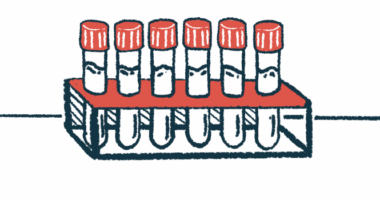Report: Woman’s cold agglutinin disease secondary to blood cancer
Bone marrow-liver-spleen diffuse large B-cell lymphoma is very rare type

A woman in Sri Lanka likely developed secondary cold agglutinin disease (CAD) that resulted from a rare type of “unusual and clinically aggressive” diffuse large B-cell lymphoma, a fast-growing blood cancer that formed in immune B-cells and involved the bone marrow, liver, and spleen.
The case is the first with this type of diffuse large B-cell lymphoma being described in association with CAD, according to the researchers, who said their report may aid in the “early identification and treatment of this aggressive lymphoma.”
The woman needed blood transfusions when she first showed symptoms of CAD, but signs of anemia, that is, abnormally low of red blood cells, resolved with chemotherapy and didn’t return at follow-up. The woman’s case was described in the study, “Bone marrow–liver–spleen-type diffuse large B-cell lymphoma presenting with cold autoimmune hemolytic anemia: a case report,” in the Journal of Medical Case Reports.
CAD occurs when self-reactive antibodies called cold agglutinins bind to red blood cells at cold temperatures, marking them for destruction. There are two main types of CAD. Primary CAD arises on its own without an apparent cause, while secondary CAD develops as the result of other diseases, such as a blood cancer.
Primary bone marrow diffuse large B-cell lymphoma is rare and the bone marrow-liver-spleen type is even rarer, with few reported cases. It often presents with fever and low numbers of red blood cells and platelets. In about two-thirds of cases, it triggers an immune overreaction called hemophagocytic syndrome, where certain white blood cells grow uncontrollably and drive an inflammatory response that can cause organs to fail.
Diagnosing secondary CAD with rare blood cancer
Researchers at the University of Colombo in Sri Lanka said the woman presented with shortness of breath, a productive cough, and fever lasting for four days. Her eyes looked pale and she had a tender and enlarged liver, an enlarged spleen that extended 18 cm (seven inches) from the left lower edge of the ribcage, and no swollen lymph nodes.
Blood tests showed lower than normal red blood cells, white blood cells, and platelets. Hemoglobin, the protein that carries oxygen in red blood cells, was also abnormally low. The reticulocyte index, which indicates the rate at which the bone marrow is producing new red blood cells to replace lost ones, was elevated (4.4%), consistent with increased production.
A blood smear to check how cells looked under a microscope revealed small clumps of red blood cells. In CAD, cold agglutinins cause red blood cells to agglutinate, or clump together. Here, some cells formed chains that resembled stacks of coins, which is known as Rouleaux formation. Immature white blood cells were also present.
Levels of bilirubin and lactate dehydrogenase, which are released from red blood cells when they’re destroyed, were also higher than normal.
Further blood testing revealed high levels of cold agglutinins, supporting a diagnosis of CAD. After four units of concentrated red blood cells were transfused, hemoglobin increased to near-normal levels.
A bone marrow biopsy revealed large numbers of mononuclear cells, which are cells with a single nucleus, the compartment that holds their genetic information. These cells were mostly medium to large and had irregular nuclei. The presence of fibrous tissue suggested a high-grade lymphoma. Mononuclear cells also tested positive for CD20, CD10, and BCL2, three biomarkers of B-cell lymphoma.
“This confirmed the diagnosis of B-cell [high-grade] lymphoma, most likely a diffuse large [B-cell] lymphoma involving … the bone marrow,” the researchers wrote.
On CT scans, both the liver and spleen appeared enlarged. Because no other causes were found, the liver and spleen were considered to be involved with the blood cancer. However, “the patient did not consent to a biopsy from liver or spleen to confirm the tissue diagnosis of lymphoma involvement.”
The woman was started on a chemotherapy regimen known as R-CHOP, which includes rituximab, cyclophosphamide, doxorubicin hydrochloride (hydroxydaunorubicin), vincristine sulfate, and the corticosteroid prednisone, “and is currently in remission,” according to the researchers.
While she needed red blood cell transfusions at the time of her CAD diagnosis, chemotherapy resolved the hemolytic anemia, which refers to anemia driven by the premature destruction of red blood cells. “There was no relapse of [CAD] during the follow-up period,” the researchers wrote.
This bone marrow-liver-spleen type of diffuse large B-cell lymphoma has a “fulminant clinical course that is dramatically different from the more common [diffuse large B-cell lymphoma]. It is important to keep an open mind in identifying these patients as early as possible as they can present with different clinical manifestations, as in our patient,” the researchers wrote.







